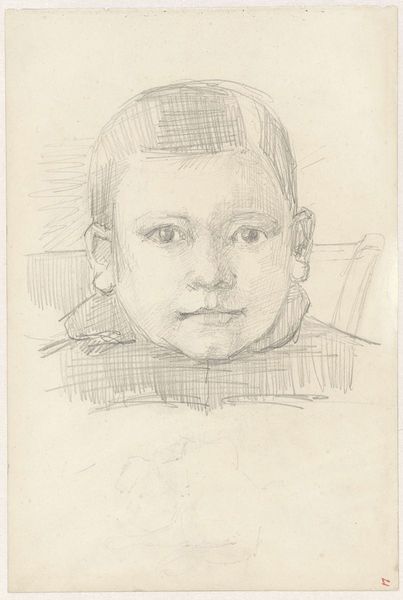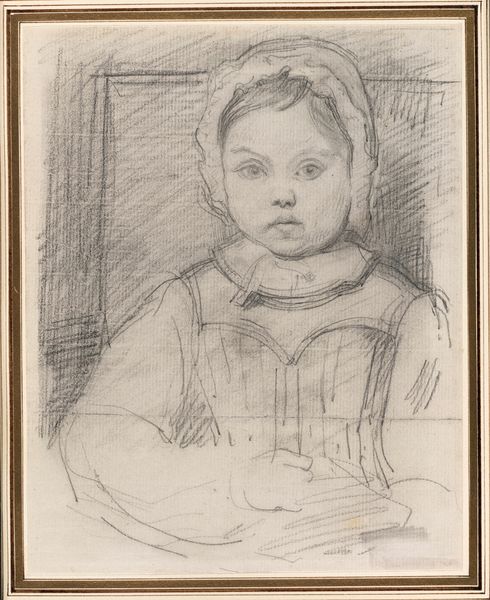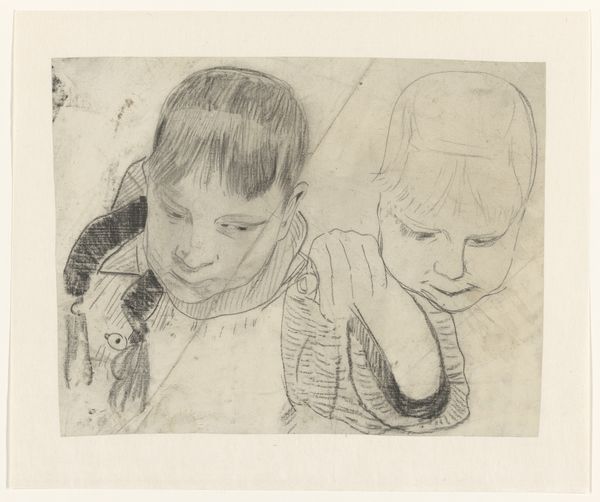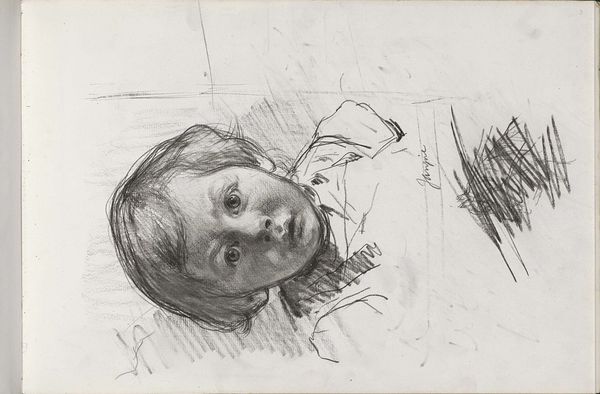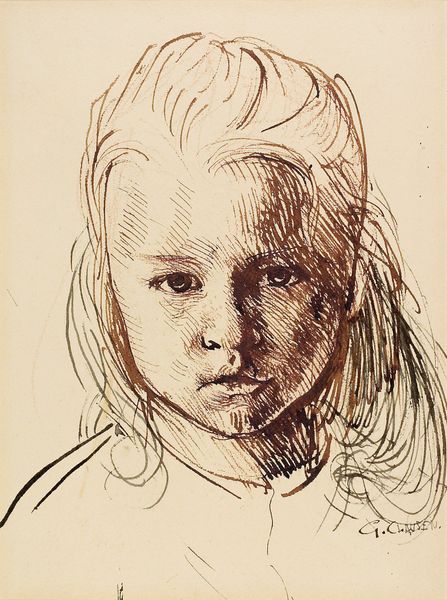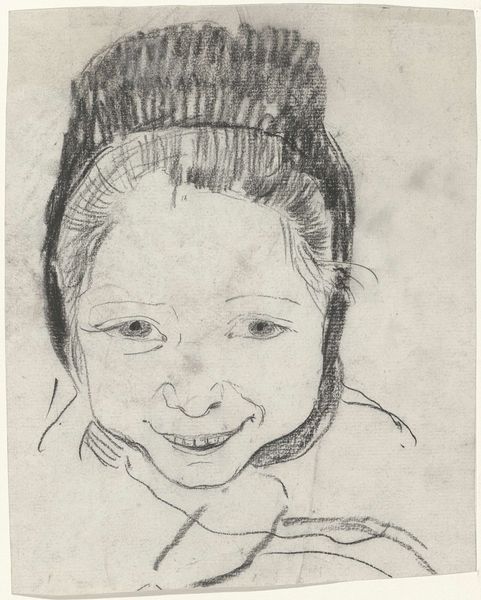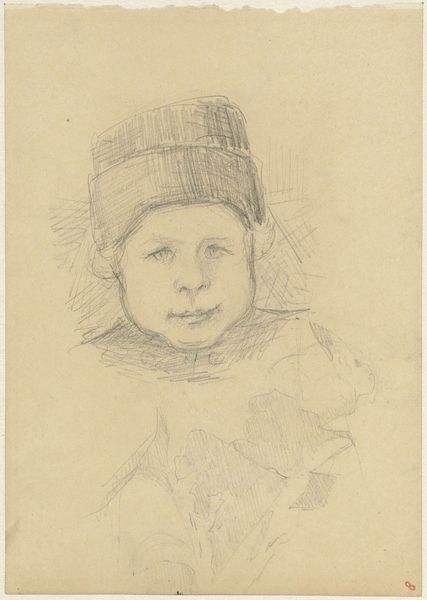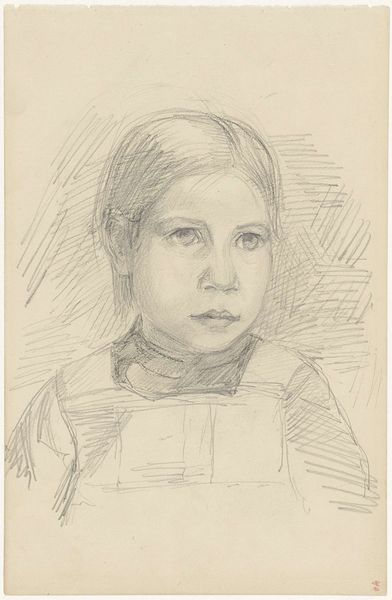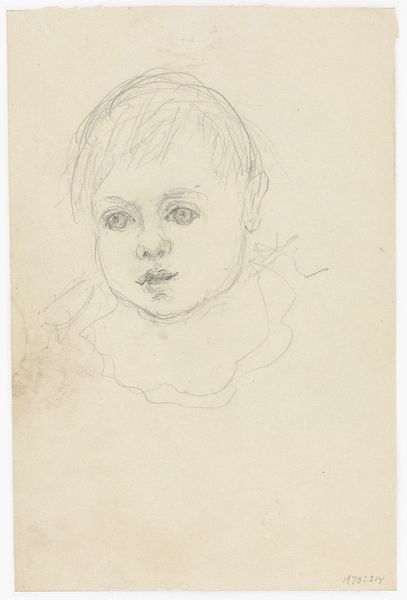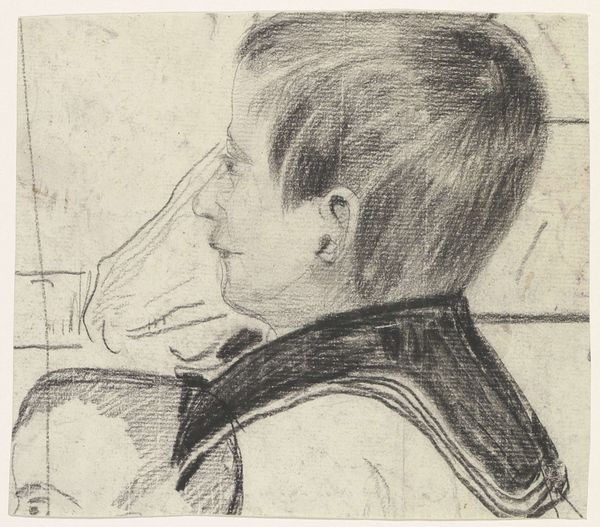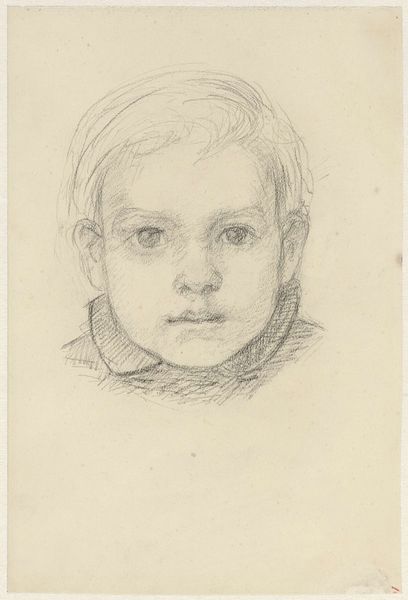
Dimensions: height 346 mm, width 262 mm
Copyright: Rijks Museum: Open Domain
Curator: This work by Carel Adolph Lion Cachet, entitled "Kinderen in de schoolbank," offers us a glimpse into a classroom scene rendered in pencil sometime between 1874 and 1945. What are your initial thoughts on it? Editor: There's a stark realism here, almost unsettling. The children's faces have an intensity, a certain weight that feels heavier than what you might expect from a classroom scene. It feels socially charged, as though the artist captures something deeper about their circumstances. Curator: Yes, the faces do possess a certain gravitas, don't they? The use of pencil allows for capturing fleeting expressions, revealing inner lives. To me, it echoes similar approaches we see in portraiture intended to evoke emotional connection and understanding of an individual’s persona, though it is somewhat unconventional. The light is simple. Editor: Exactly. This isn't some idyllic rendering of childhood innocence. I think that the artist intentionally wants to portray the school's complex social dynamics of power and knowledge. How do we interpret this representation in light of colonial legacies and educational reform? Curator: The schoolroom in general has traditionally been charged symbolically, associated with notions of control, order, indoctrination even. In this context, there is a kind of uniform structure with students facing forward, focused on their studies and play, although there appears a variety of individual styles represented amongst students which is unexpected from that time. Do you believe there's commentary intended on institutional rigidity or some degree of the opposite? Editor: I'd argue that Cachet uses the medium to draw attention to these constraints, highlighting how education can shape and even confine young minds. Look at how carefully their features are outlined, yet within those bounds, they exhibit such individuality in attitude and expression. In that light, even playing in a certain controlled structure. The medium highlights how constraints themselves do not always create or support conformity. Curator: That's a poignant point, emphasizing how individuality persists even within imposed structure and convention. Ultimately, "Kinderen in de schoolbank" shows the dynamism present at that time despite limited tools, the universal theme of navigating rules, expectations, self-identity and social relationships. Thank you. Editor: It provides room for reflection on social conditions within learning environments which echoes in today's political landscape and struggles. Thank you.
Comments
No comments
Be the first to comment and join the conversation on the ultimate creative platform.
